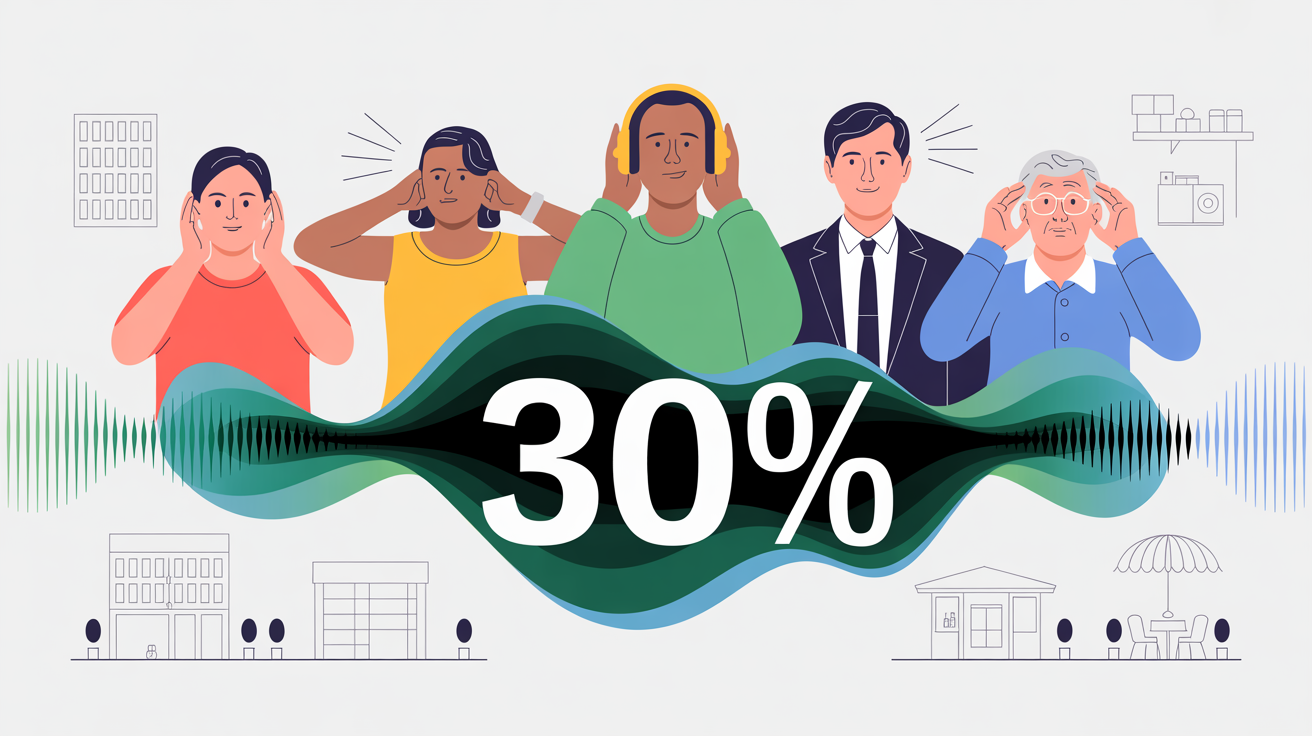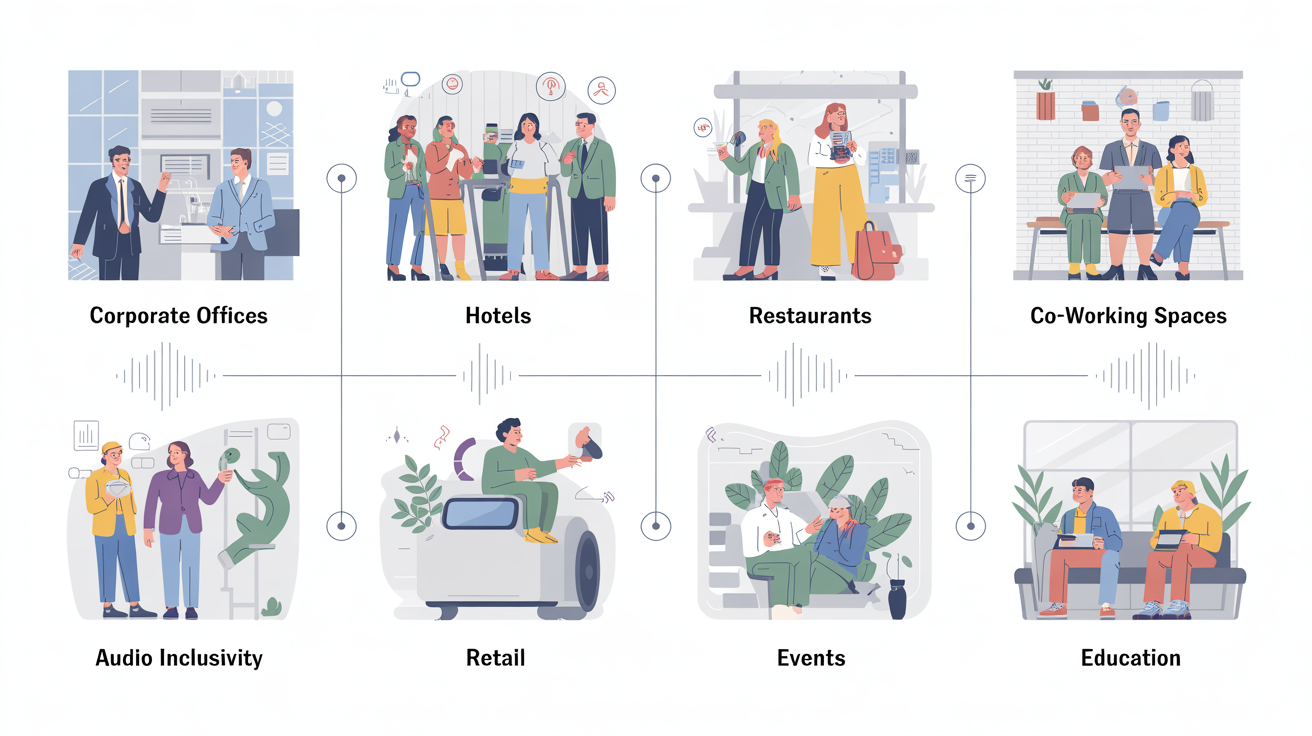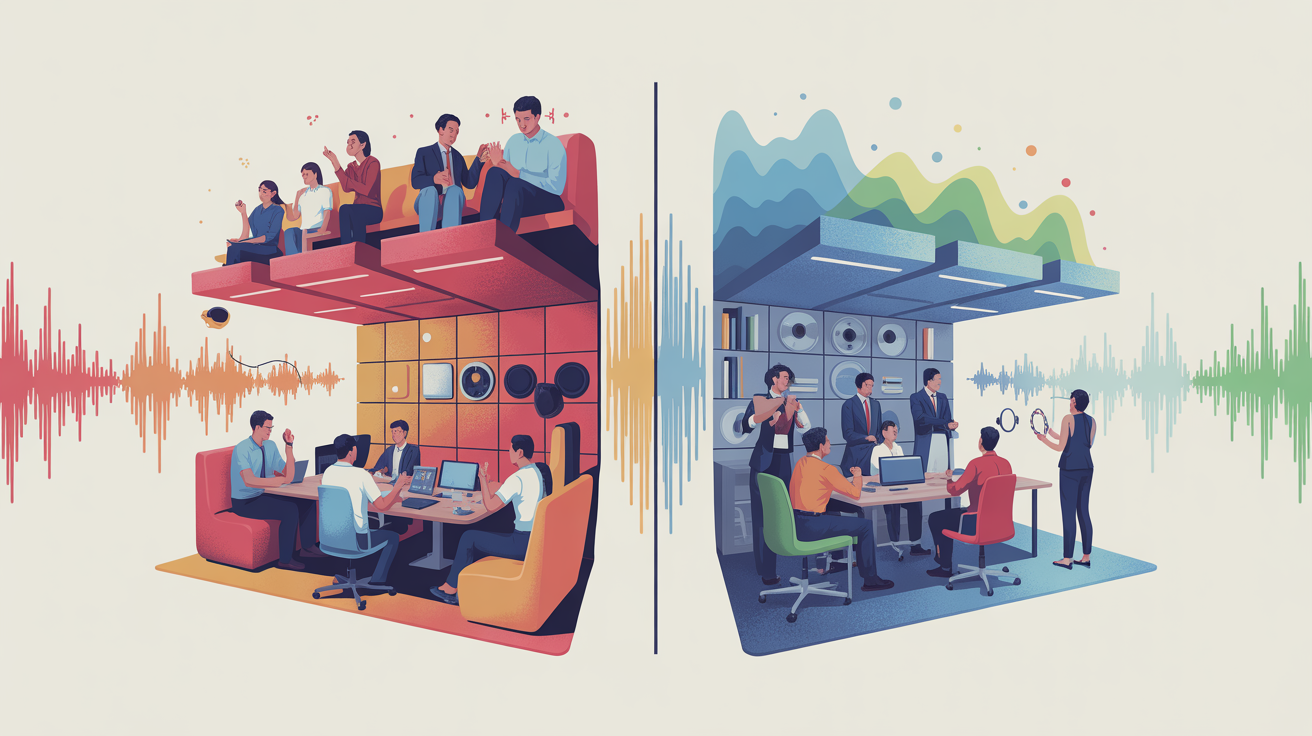Are You Excluding 30% of Your Workforce and Customers? The Audio Inclusivity Gap Costing UK Businesses Millions
Published on March 3, 2025

Audio inclusivity addresses the needs of 30% of the UK population - over 20 million noise-sensitive individuals whose workplace and customer experience requirements remain largely unmet. Research demonstrates that businesses implementing audio inclusive design achieve 20-30% productivity improvements whilst capturing previously underserved market segments. Learn how inclusive sound environments transform from reactive accessibility costs to proactive competitive advantages across corporate offices, hospitality, retail, and service sectors.
The Audio Inclusivity Gap Costing UK Businesses Millions
Walk into any boardroom discussing diversity and inclusion, and you'll hear about gender, ethnicity, and visible disabilities. But there's one group that remains consistently overlooked: the noise-sensitive. They represent 30% of the UK population - over 20 million people whose audio accessibility needs are systematically ignored, creating substantial hidden costs in lost productivity, customer satisfaction, and competitive advantage.
This isn't about volume control or quiet spaces. It's about audio inclusivity - the strategic design of sound environments that enable everyone to participate, contribute, and engage fully.
The Invisible 30%: Who They Are and Why They Matter
Audio inclusivity addresses the needs of diverse populations whose hearing, processing, or sensory differences affect how they experience sound environments. Understanding these groups is essential for creating truly inclusive workplaces and customer experiences.
Hard of hearing individuals represent the largest segment - 18 million people (27% of UK population). For them, background noise creates communication barriers that extend far beyond volume levels, with 62% reporting feelings of isolation due to acoustic challenges.
Tinnitus sufferers account for 7+ million adults, many experiencing anxiety around unpredictable sound environments. 90% also have hearing loss, compounding their need for audio accessible workplaces.
Neurodivergent individuals - including 3 million people with ADHD and 1-2 million autistic people - process auditory information differently. They often struggle to filter background noise in ways that directly impact concentration and task completion.
Misophonia affects 18% of adults, creating intense emotional reactions to specific trigger sounds. Despite affecting nearly one in five people, it remains largely unrecognised in workplace design.
Age-related auditory processing changes affect a substantial portion of the workforce and customer base from around age 50. Research demonstrates exponential decline in speech perception in noise from around 50 years of age, with normal-hearing older adults experiencing increased difficulties understanding speech in background noise. These processing difficulties often begin to emerge during middle age, representing millions of employees and customers whose audio accessibility needs directly impact business performance and satisfaction.
The Business Impact: Beyond Accommodation
With such a large population being impacted by unwanted noise, Audio inclusivity isn't just about meeting accessibility requirements - it's about unlocking measurable business value. Research reveals that noise is the #1 workplace complaint, more important to employees than cleanliness, furniture, or temperature.

Employee Performance and Retention
Productivity losses from inadequate audio environments are substantial. Studies show 20-30% productivity improvements are achievable through audio inclusive office design that supports diverse processing needs. When nearly three in ten employees struggle with acoustic environments, the cumulative effect on output, creativity, and job satisfaction becomes a strategic priority.
Talent acquisition increasingly involves competing for neurodivergent professionals whose skills are highly valued but whose needs are often overlooked. Research demonstrates that designing for neurodivergent individuals often improves conditions for all employees.
Customer Experience and Revenue
Customer satisfaction suffers when businesses ignore audio accessibility. Studies indicate that employees want distraction-free environments above anything else, yet acoustic comfort remains last in designers' considerations. This disconnect extends to customer-facing environments where 30% of potential clients may feel excluded.
Market differentiation emerges from audio inclusive practices. Organisations implementing comprehensive audio accessibility report enhanced customer loyalty, positive brand association with forward-thinking inclusivity, and competitive advantage in awareness-driven market segments.
Creating Audio Inclusive Environments: A Strategic Approach
Implementing audio inclusivity requires systematic assessment and targeted improvements rather than one-size-fits-all solutions.
Understanding Your Current Environment
Assessment of existing conditions reveals how sound affects different user groups. This involves measuring acoustic characteristics, observing user behaviour, and gathering feedback from noise-sensitive employees and customers. Successful implementations begin with comprehensive understanding of current challenges.
Try our Free Noise Score for a comprehensive personalised report.
Designing Targeted Solutions
Audio inclusive design integrates multiple approaches: acoustic zoning for different activities, sound masking systems that provide consistent background audio, communication protocols that support diverse hearing needs, and technology integration including hearing loops and assistive listening devices.
Flexible environments recognise that audio needs vary by task, time, and individual. Rather than seeking universal quiet, audio inclusive spaces provide choice and variety that accommodate different working styles and sensory preferences.
Building an Inclusive Culture
Staff awareness and training ensure that audio inclusive practices become embedded in operational culture. This includes understanding diverse communication needs, recognising signs of auditory stress, and knowing how to provide appropriate support.
Ongoing optimisation through feedback mechanisms and regular assessment ensures that audio inclusive environments continue meeting user needs as understanding and awareness evolve.
The ROI of Audio Inclusive Investment
Direct Cost Savings
The economic impact of audio accessibility gaps includes £25-30 billion annually in productivity losses from hearing loss alone. Healthcare costs, recruitment expenses, and accommodation provision create additional financial pressures that proactive audio inclusive design can reduce.
Revenue Enhancement Opportunities
Market expansion occurs when previously excluded populations can engage comfortably with services. This includes age 50+ consumers with significant spending power, neurodivergent professionals with valuable skills, and families with diverse accessibility needs who actively seek inclusive venues.
Premium positioning becomes possible when organisations demonstrate genuine commitment to audio inclusivity. Early adopters gain reputation benefits and customer loyalty that translate into measurable competitive advantages.
Implementation Priorities for Forward-Thinking Organisations
Quick wins include volume management, staff communication training, and creating designated quiet areas. These demonstrate commitment whilst providing immediate relief for noise-sensitive individuals.
Strategic investments involve comprehensive acoustic design, assistive technology deployment, and policy development that embeds audio inclusive practices into operational procedures.
Market leadership emerges from pursuing accessibility certifications, sharing success stories, and influencing industry standards that position organisations as pioneers in inclusive design.

Conclusion: Audio Inclusivity as Competitive Strategy
The 30% of the population experiencing noise sensitivity represents both a significant market opportunity and a business imperative. Audio inclusive environments don't just accommodate differences - they create conditions where everyone can contribute their best work and engage fully as customers.
Organisations that embrace audio inclusivity gain access to previously underserved market segments whilst improving experiences for all users. The evidence demonstrates that inclusive sound design enhances productivity, customer satisfaction, and competitive positioning in increasingly awareness-driven markets.
Ready to discover your audio inclusivity opportunity? Understanding how your current environment impacts noise-sensitive stakeholders is the first step toward unlocking these competitive advantages. Take your Free Noise Score to identify specific improvements that could transform your workplace culture and customer experience.
Because designing for sound inclusion is designing for business success.